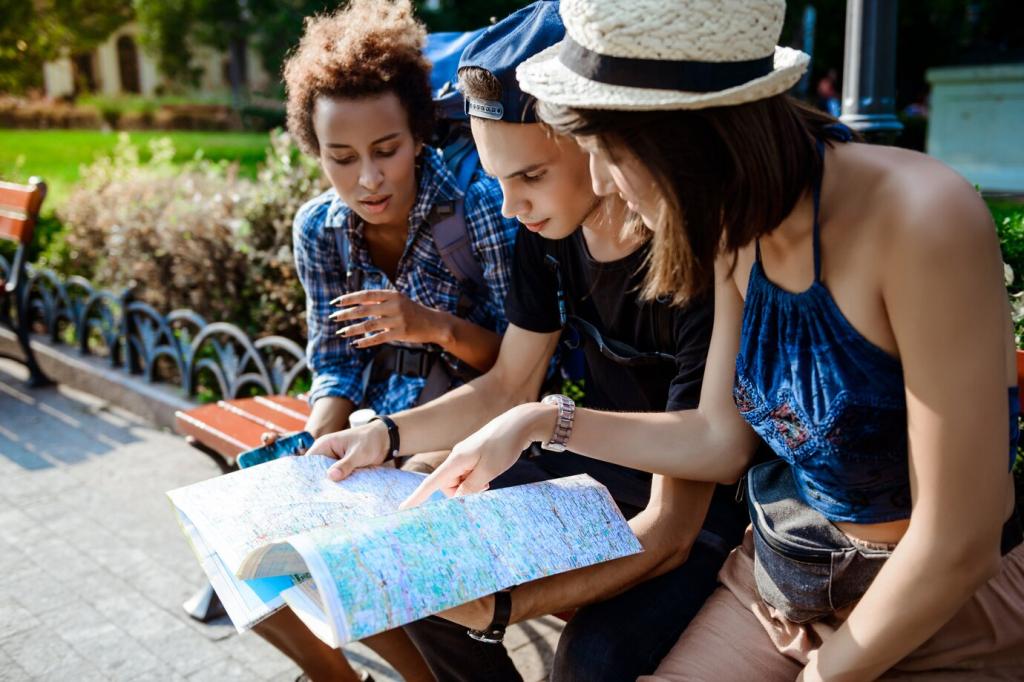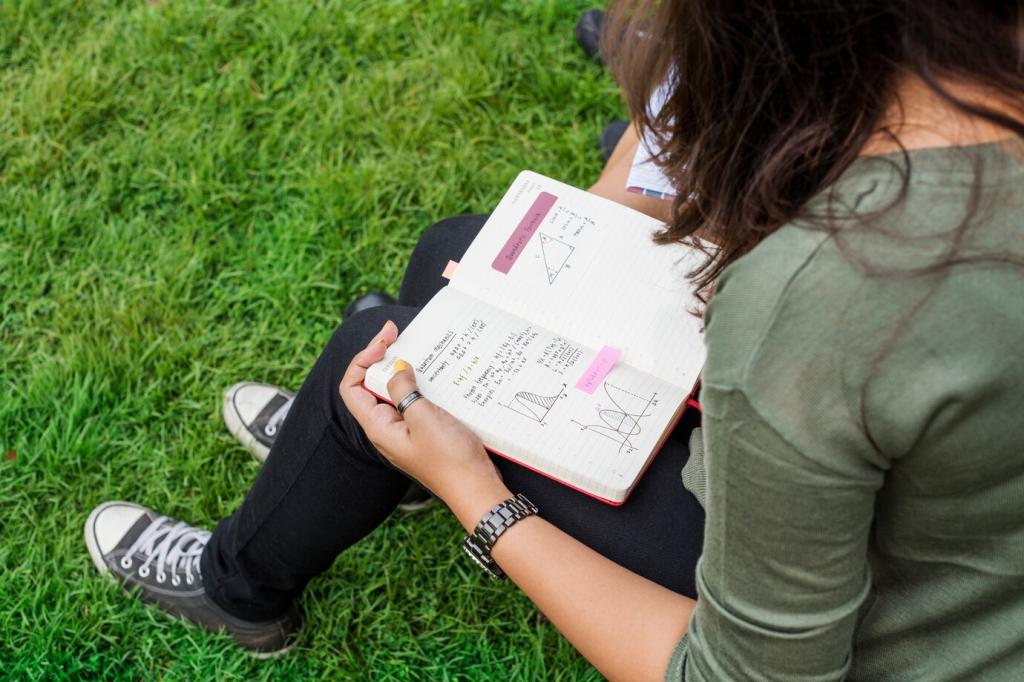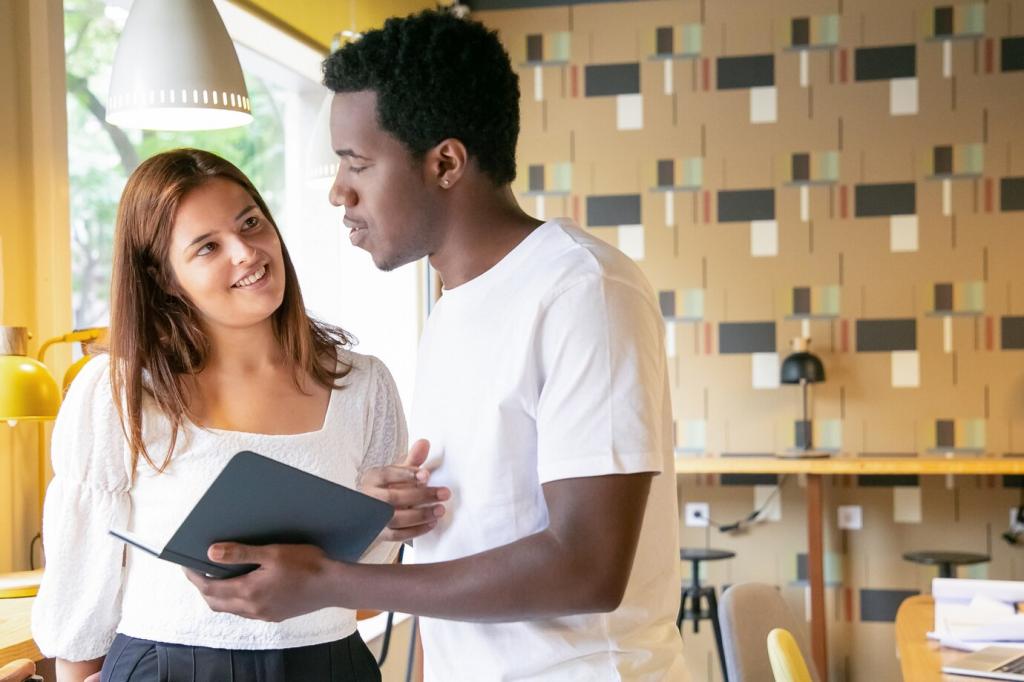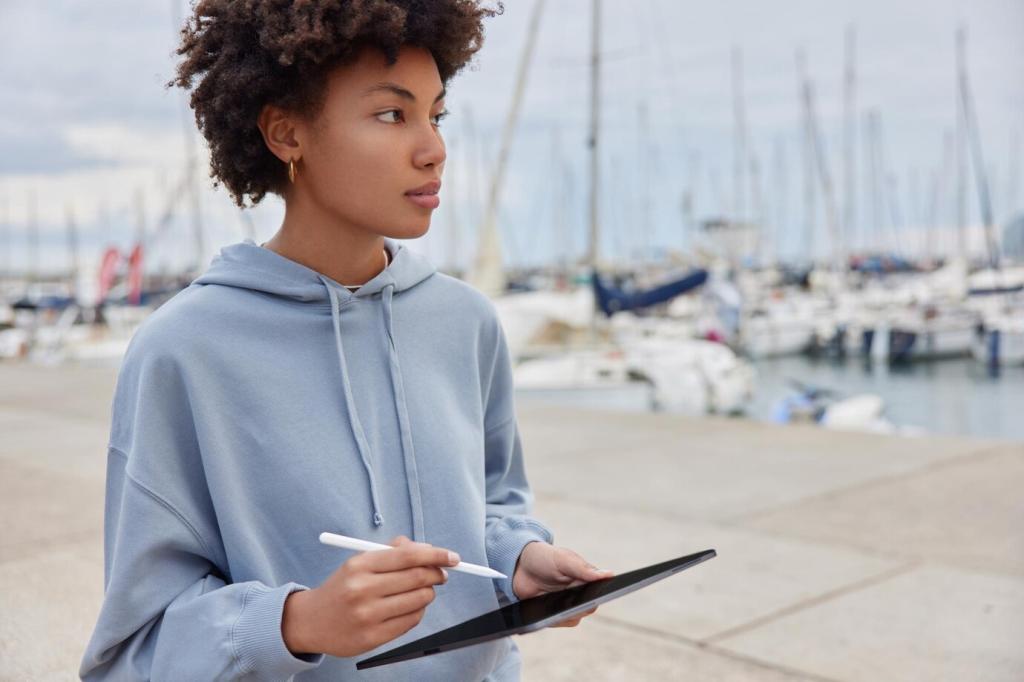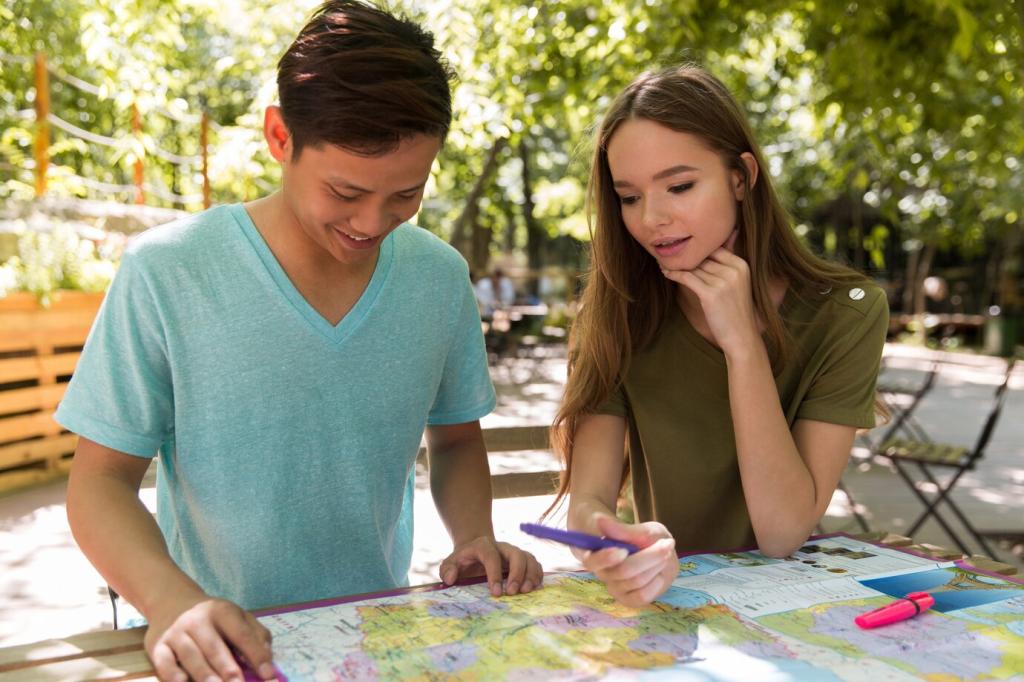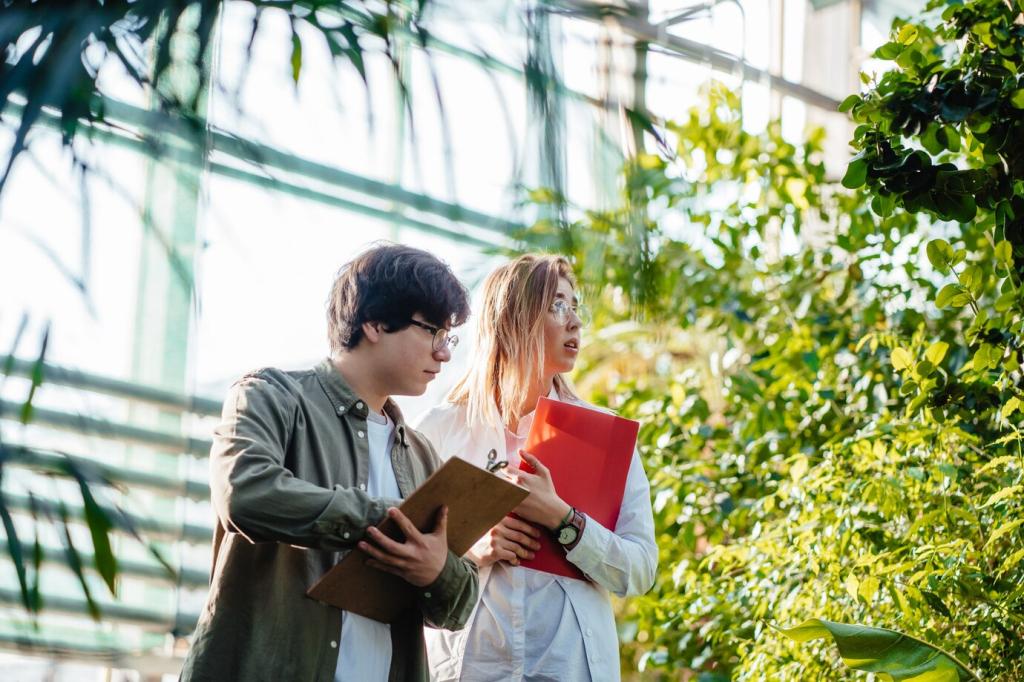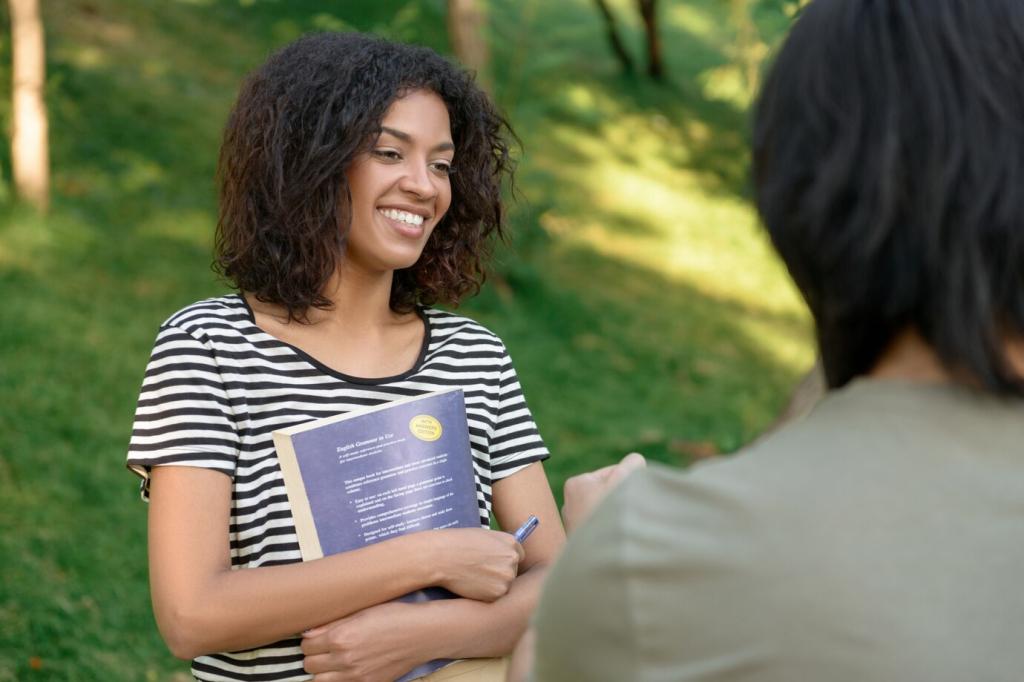Sensory Storytelling and On-the-Spot Imagery
Invite listeners to notice the citrus tang from a nearby bakery, the grit on the stone stair, or the gull’s sharp call. Short sensory prompts create mental cinema. Ask, “What do you smell right now?” to convert passive observation into personal discovery and shared storytelling.
Sensory Storytelling and On-the-Spot Imagery
Attach grand events to humble details—a cracked doorstep from hurried boots on a revolution night, a scorched lintel after a forgotten hearth fire. These micro-moments shrink distance and time, letting guests feel history as lived experience rather than distant textbook chapters.

